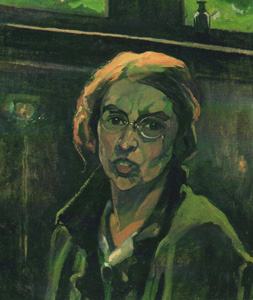Related Research Articles

Maria Elisabeth Georgina Ansingh was a Dutch painter.

Pieter de Graeff, was a member of the De Graeff-family from the Dutch Golden Age. He was an Amsterdam Regent during the late 1660s and the early 1670s, and held the titles as Lord of the semi-sovereign Fief Zuid-Polsbroek and 19.th Lord of the Free and high Fief Ilpendam and Purmerland. Pieter de Graeff was a member of a family of regents who belonged to the republican political movement also referred to as the ‘state oriented’, as opposed to the Royalists.

Cornelis de Graeff was a member of the family De Graeff, a prominent regent family from the Dutch Golden Age.

Witsen is the surname of a major family in the history of Amsterdam. Its most notable member was the politician and scholar Nicolaes Witsen, but many other members of the family also held leading roles in trade and politics up until the French occupation of the Netherlands in the late 18th century. It probably originated in Akersloot in Noord-Holland, where Jacob Witsz was a farmer and owned a farmhouse known as ‘de Noord’. A 1774 history of the family states that the family came from Schagerwaard, which had been known as the Witsmeer before it was reclaimed.
Jacoba van Velde was a Dutch writer, translator, and dramaturge. Her first novel, "De grote zaal", appeared in the literary journal Querido in 1953 and was translated into thirteen languages within ten years. During her life around 75,000 copies of "De grote zaal" were sold. In 2010, the book was chosen for the Nederland Leest campaign and copies were given away for free to members of all the public libraries in The Netherlands.

Jacoba Johanna (Coba) Ritsema, was a portrait painter from the Netherlands.

Jurjentje Aukes Rauwerda, later Jurrentje Weinthal, was a Dutch prostitute and procurer. She was famous among members of her profession in the contemporary Netherlands, and ran the largest brothel in Amsterdam, the Maison Weinthal.

1001 Vrouwen uit de Nederlandse geschiedenis is a compilation of 1001 biographies of famous women of the Netherlands spanning roughly 1700 years.

Catharina Jacoba Abrahamina Enschedé was a 19th-century Dutch painter.

Jacoba van Tongeren 14 October 1903 – Bergen, 15 September 1967) was a resistance fighter, the founder and leader of Group 2000, a resistance group during the Second World War. Jacoba van Tongeren is the only woman to have created and led a resistance group during the war. In 1990, Yad Vashem honoured Jacoba van Tongeren as Righteous Among the Nations.
Henrica van Erp, was a Dutch abbess and author of her monastery's Chronicle, making her one of the first historians of 16th-century Netherlands.

Agnieta Cornelia Gijswijt (1873-1962) was a Dutch painter.

Adriana "Adri" Jacoba Pieck (1894-1982) was a Dutch artist.

Margaretha "Gretha" Pieck (1898-1920) was a Dutch artist.

Bertha Koster-thoe Schwartzenberg en Hohenlansberg (1891-1993) was a Dutch sculptor.
Catharina Elisabeth Wassink (1879-1960) was a Dutch artist.
Clara Adriana van der Werff (1895-1962) was a Dutch artist.

Dorry Kahn-Weyl (1896-1981) was a Dutch artist.
Elsa Woutersen-van Doesburgh (1875-1957) was a Dutch artist.
References
- 1 2 "Gonda Wulfse". RKD (in Dutch). Retrieved 24 March 2021.
- ↑ "Allegonda Jacoba Catharina Wulfse". Beeldend BeNeLux Elektronisch (Lexicon). Retrieved 24 March 2021.
- ↑ "Wulfse, Allegonda Jacoba Catharina". Biografisch Portaal. Retrieved 24 March 2021.